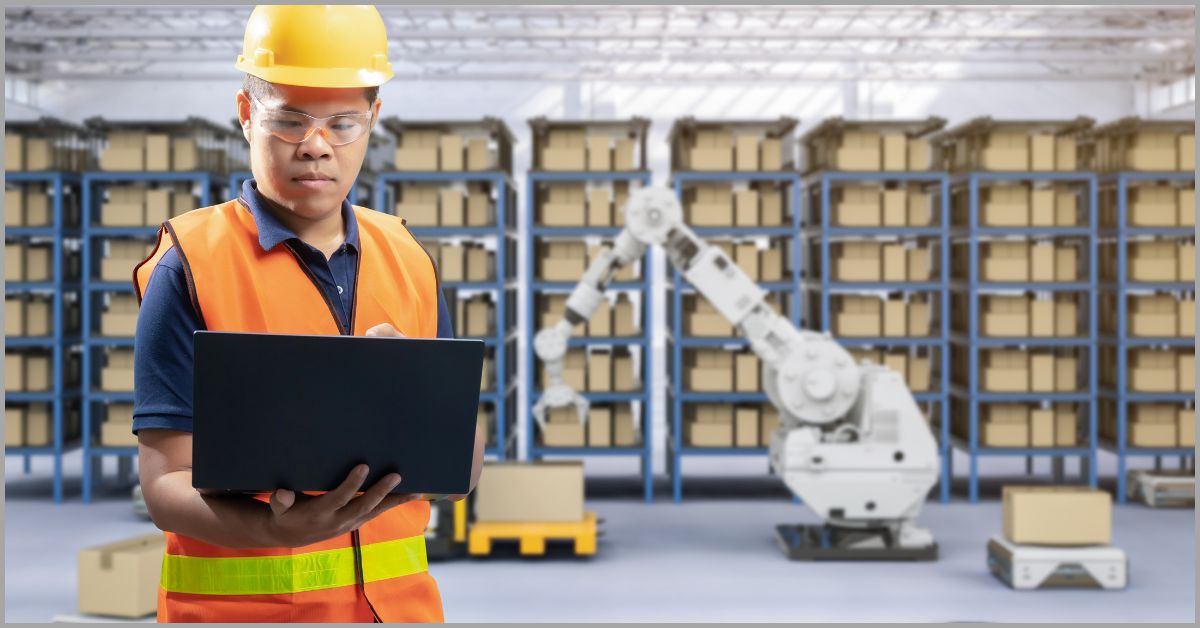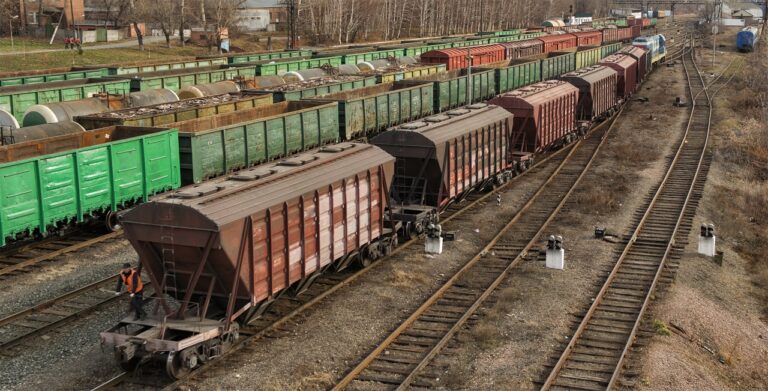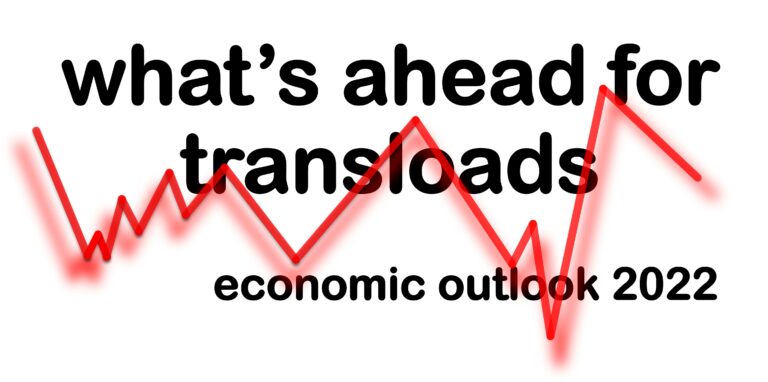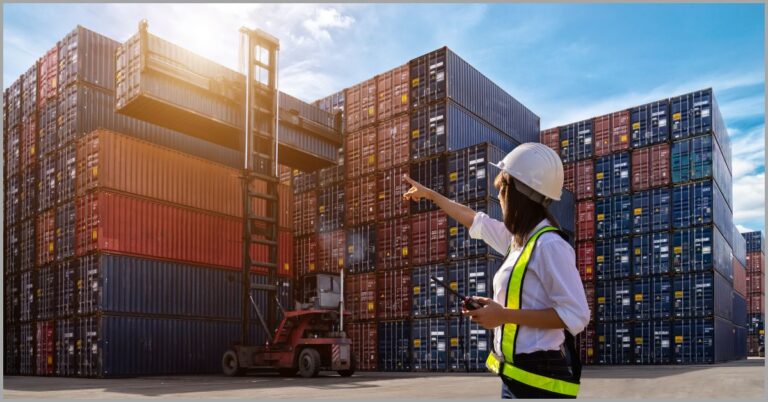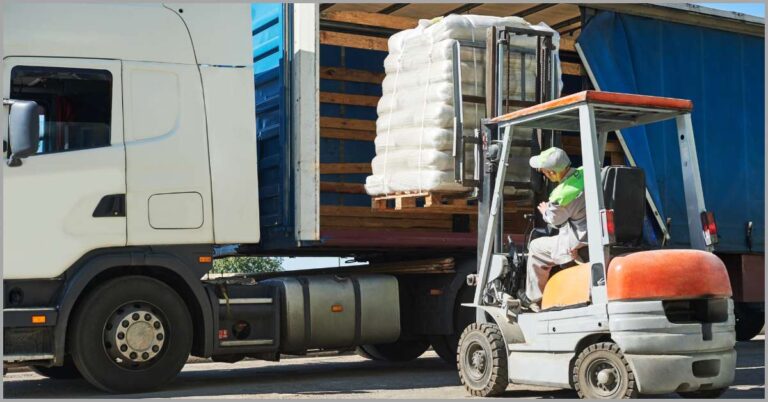10 Tech Innovations Revolutionizing Warehouse Management & Logistics in 2024
Want to modernize your warehouse?
Rising innovations like transload management software and the rapid pace of innovation make the industry unpredictable.
However, your success in warehousing and logistics depends on keeping up with modern advancements to run an efficient, technology-driven workflow.
A survey by Manhattan revealed that 67% of US warehouses aren’t satisfied with their warehouse operations. Out-of-date IT solutions surfaced among the leading factors for below-par performances.
If you’re to thrive in your industry, you need to embrace the emerging uses of technology in warehousing and logistics. This is key to improving warehouse efficiency and productivity and also raising logistical performances for your business.
Technology is also pivotal to meeting the demands of today’s very complex supply chains to help improve customer experiences and sharpen your competitive edge.
In this article, we’ll discuss the tech innovations revolutionizing warehouse management and logistics in 2024 to help you improve warehousing and logistics operations.
Let’s get started.
1. IoT-enabled inventory tracking
IoT is taking on increasing roles in warehousing.
Through a system of connected networks, software, sensors and devices, this technology is enabling us to track inventory items in real time, thereby improving inventory visibility for your warehouse.
When inventory tracking is largely manual and inefficient, this can lead to out-of-stock situations that delay shipments and hurt customer satisfaction.
Stockouts are a runaway problem, costing businesses $1.235 trillion in 2022 as per a recent study by Zebra and Antuit. These stockouts arose partly due to manual inventory tracking that resulted in delayed orders and lost sales for all types of businesses.
If we can embrace innovative uses of technology in warehousing such as IoT-enabled tracking, we can certainly gain better inventory visibility to protect the bottom line.
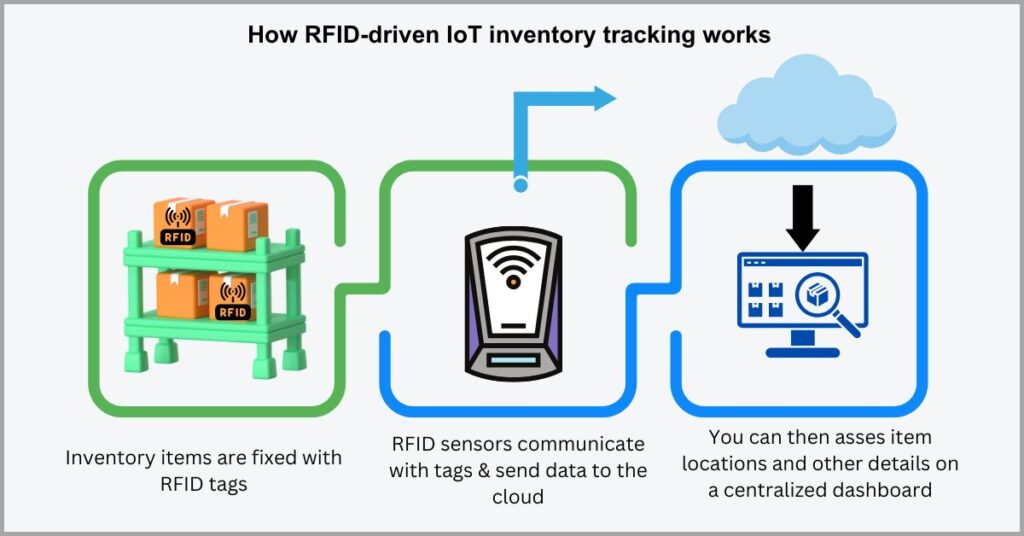
So how does IoT enable real-time tracking?
IoT employs a combination of technologies, the most notable of which is Radio Frequency Identification or RFID. This technology embeds information into inventory items using special tags.
Afterward, IoT sensors can communicate with these RFID tags, getting information about the real-time location and movement of items. With this information automatically tracked, your transload shipping business improves inventory visibility and efficiency.
Vitaform, a foam manufacturer based in Europe, previously relied on pen and paper to track its inventory which consisted of heavy cushioning materials and foam.
However, they improved inventory tracking when they implemented an IoT-tracking system that leveraged RFID solutions. This enabled them to track the movement of items in real time, which eventually led to lower dispatch items.
2. Automated guided vehicles
What are Automated Guided Vehicles or AGVs?
These are unmanned or self-guide vehicles you can use to automatically transport goods with your warehouse. They leverage sensors, floor markers and magnets, among other technologies, to travel safely and precisely between warehouse locations.
With AGVs essentially driverless and also minimizing work for human operators, they are a great piece of technology for plugging warehouse worker shortages.
In 2022, a study by Instawork discovered that 64% of warehouses lost revenue because of insufficient staffing. The labor shortage gap is set to worsen in the coming years due to shifting job preferences and generational gaps.
It is for this reason that you should embrace the uses of technology in warehousing like AGVs, which help you make do with a lean warehouse workforce.
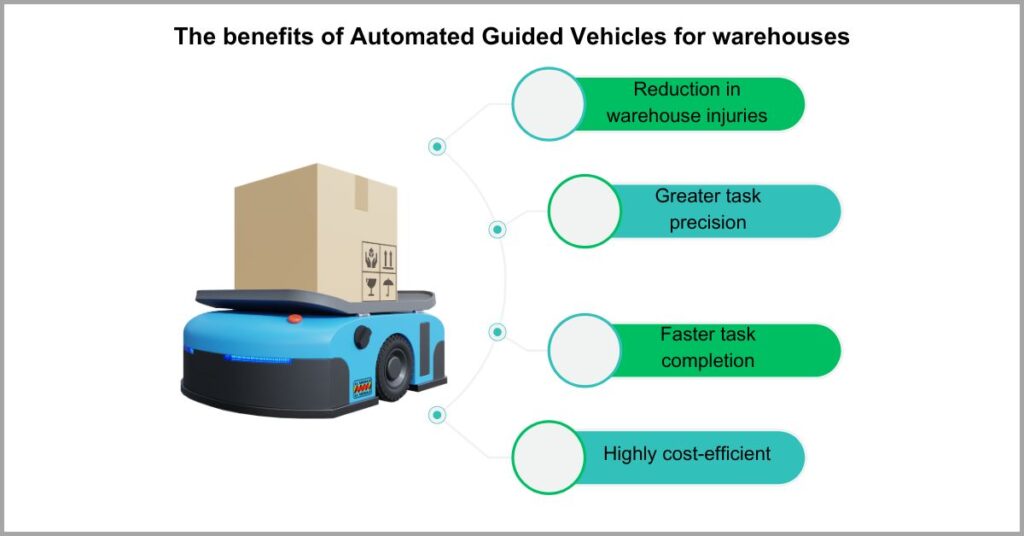
Automated Guided Vehicles are great for business because they work non-stop, taking over and completing iterative tasks with great speed and precision each time.
In addition to improving efficiency, AGVs also increase worker safety.
This is because they can lift very heavy loads or reach heights that increase the risk of falling, strain and general injury for their human counterparts. Moreover, they can ferry cargo under extreme work conditions like handling corrosive substances.
It’s important to integrate AGVs with warehouse yard management tools to get real time insight into the location of inventory items to help coordinate movements.
This is why you should consider AGV and warehouse management system compatibility. Preferably, these two systems should share information without complex data exchanges, to enable excellent coordination with other systems and workers.
3. AI-powered demand forecasting
Artificial intelligence is streamlining demand forecasting.
While traditional forecasting strategies zero in on historical data, AI expands the scope. In addition to SKU-level data & order histories, it also scrutinizes online reviews, social media activities, and market trends in real time to inform more accurate predictions.
AI overcomes the limitations of labor-intensive spreadsheets and manual demand calculations, which often miss the mark, leading to non-optimal stocking.
In fact, AI can improve forecasting accuracy by 50% compared to traditional forecasting strategies while it can reduce lost sales due to stock-out cases by 65%, according to a study by McKinsey. This proves the superiority of AI-driven forecasting solutions.
Besides improving prediction accuracy, AI also takes a lot of work out of iterative forecasting work to make your warehouse more efficient.
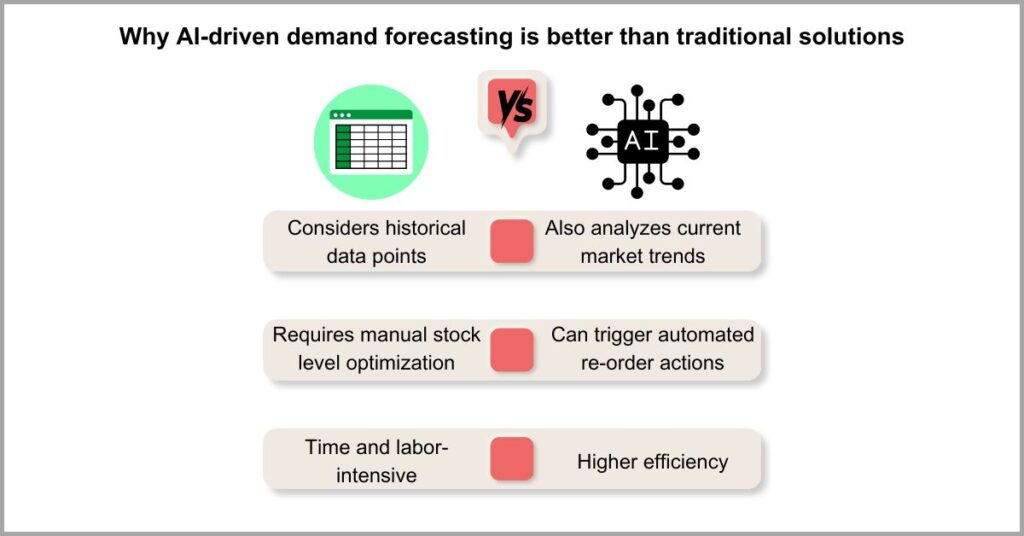
Keen to avoid stock-out scenarios for your warehouse?
You’ll need AI-powered warehouse inventory management solutions to help you out.
AI models can analyze market trends, thereby predicting which products are likely to come in demand and when so that you can maintain appropriate stock levels.
Furthermore, you can also configure automatic reorder points based on SKU-level information to ensure the timely replenishment of items that have experienced an unanticipated surge in demand.
Danone Group, a France-based manufacturer of foods, needed a way to predict demand more accurately due to the highly perishable nature of their stock items.
They turn to AI-driven tools and improved demand forecasting accuracy, while reducing cases of unsold stock and stock-outs. Overall, this technology helped the company exceed its targets with store-level inventories.
4. Augmented reality for order picking
Augmented Reality (AR) is becoming a key ally for warehouses.
It superimposes computer-generated visuals into the real world, helping to guide your warehouse workers to use the shortest path towards their target in real time and further ensure they pick the correct item.
With slow and inefficient traditional order picking strategies, your warehouse can direct a huge amount of resources towards picking operations alone.
A survey by SCMR determined that 53% of warehouse workers still rely on paper lists for ordering picking. This greatly slowed them down, resulting in these workers spending over half their time on picking tasks alone.
It’s therefore important to embrace innovative uses of technology in warehousing, like AR to help get the most out of your workforce by enhancing productivity and efficiency.
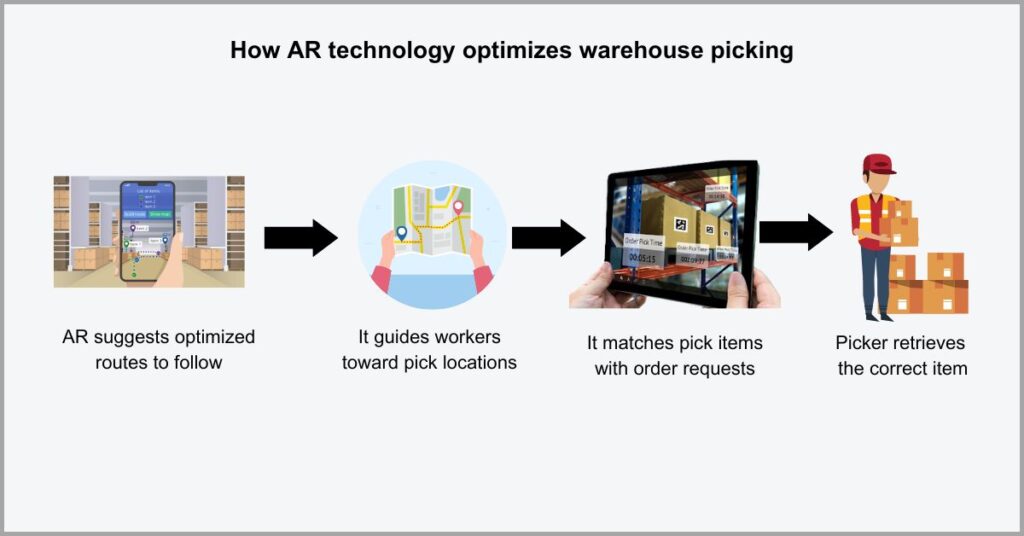
What are the benefits of AR in warehouse picking?
With AR-guided navigation, you can get suggestions about optimized routes . This makes it one of the most essential warehouse management features to prioritize if you want to streamline picking operations in a large warehouse with a complex layout.
By improving picking productivity, which is the backbone of your warehousing operations, you can accelerate fulfillment and increase sales and revenue as well.
Additionally, this improvement in picking accuracy also ensures fewer product returns, higher customer satisfaction and fewer reverse logistics to deal with.
AR is also a useful tool to help you train new employees on picking and warehouse operations at large. It can simulate real-world scenarios and provide guidance to warehouse workers in real time to smoothen the learning curve.
5. Robotics Process Automation (RPA) in logistics
RPA has wide-spread applications in logistics.
Today, we’re noticing RPA being utilized to track high-volume invoices more accurately, perform picking, sorting and packing operations and even keep customers informed about shipment locations to help your business raise client satisfaction.
What’s more, RPA can automate order tracking and management, which can be a big struggle especially if you rely on very fragmented ordering systems.
A survey by Deloitte revealed that 86% of warehouses who implemented RPA realized improved productivity, while 59% of them noticed significant cost-savings. Other top benefits that came up also included improved accuracy and streamlined compliance.
So it’s clear RPA is a revolutionary piece of technology that I recommend implementing if you’d like to achieve holistic warehouse and logistics process improvement.
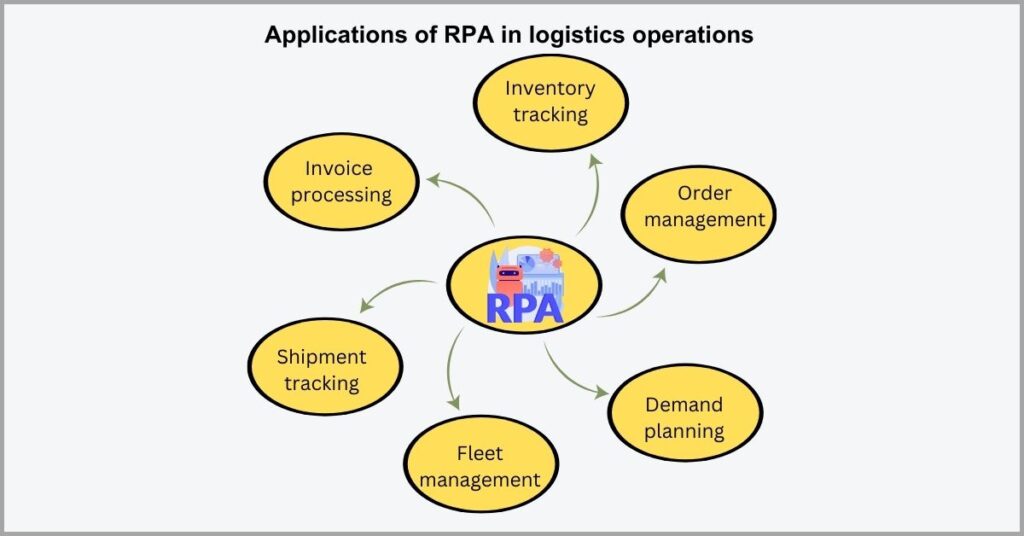
But how does RPA improve cost-efficiency exactly?
With the technology able to take over iterative tasks that traditionally required a human laborer, this reduces labor needs while allowing staff to focus on more complex tasks.
From transloading to inventory tracking, RPA can automate various processes, making it popular with modern warehouse and rail road logistics strategies. They can carry out these activities with greater speed and precision to raise efficiency and throughput.
ARA Toys, a well-established distributor and importer of Romanian todays, was looking for an automation solution to help ease its order management buren.
They turned to RPA technology and saved 120 hours per month by automating various manual order management tasks. This technology was able to receive orders, check these orders against inventory levels, and even generate invoices for clients.
6. Blockchain for supply chain transparency
What is the role of blockchain in modern logistics?
Blockchain, a distributed and immutable system of tracking information, is taking on many functions in logistics. From inventory tracking to payment verification, this technology is helping to combat traditional challenges to supply chain transparency.
With modern-day supply chains that can involve so many moving parts, end-to-end supply chain visibility is typically a difficult feat to achieve.
A survey by Gedois revealed that 70% of companies have very or extremely complex supply chains. As a result, many of them are completely sightless regarding their processes, leading to greater disruptions and compliance risks.
If you’re to make your business more resilient and improve supply chain transparency while you’re at it, I recommend considering innovative technologies like blockchain.
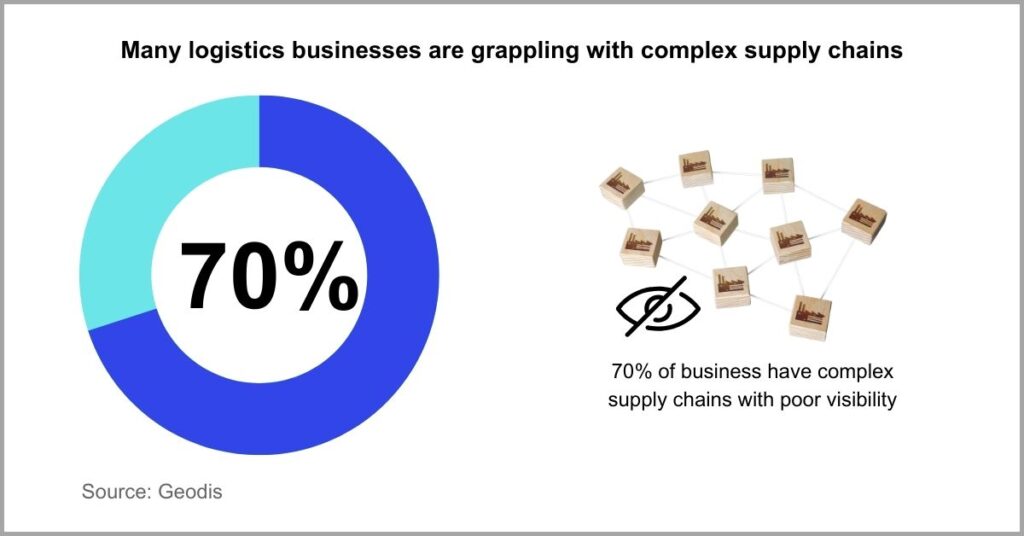
Blockchain can help improve supply chain traceability.
It captures key and immutable data points across your supply chain, allowing you, customers and authorities to track shipments right from their origin to destinations.
Moreover, blockchain based contracts create immutable copies of initial agreements, use advanced cryptography to protect information and allow for independent transaction verification. All these features help to combat supply chain fraud.
However, connecting it with transload management software, yard management tools, CRMs and other underlying technologies can be very complex. You can get around this by turning to blockchain experts to design seamless integration solutions.
Blockchain also presents huge risks due to lack of regulations and standards, so it’s vital to liaise with regulatory authorities in your industry to get the best way forward.
7. 5G networks for warehouse connectivity
5G networks create better and faster warehouses.
With your warehouse relying on an increasing number of robotics, software and sensors, 5G is the intermediary that lets you bring all these different components together to achieve synergy in automation.
In fact, 5G paves the way for interconnected warehouse technologies, and without it, you’d have siloed systems that make it difficult to scale automation.
A survey by Venca Robotics revealed that 41% of warehouses plan to adopt 5G networks and it’s top of the priority list for most of them. Further investigation revealed they view 5G as key to solving integration challenges in digitalization projects.
Overall, you can turn to 5G to link various technologies to improve your warehouse’s inventory management, order picking, and worker management systems, among others.
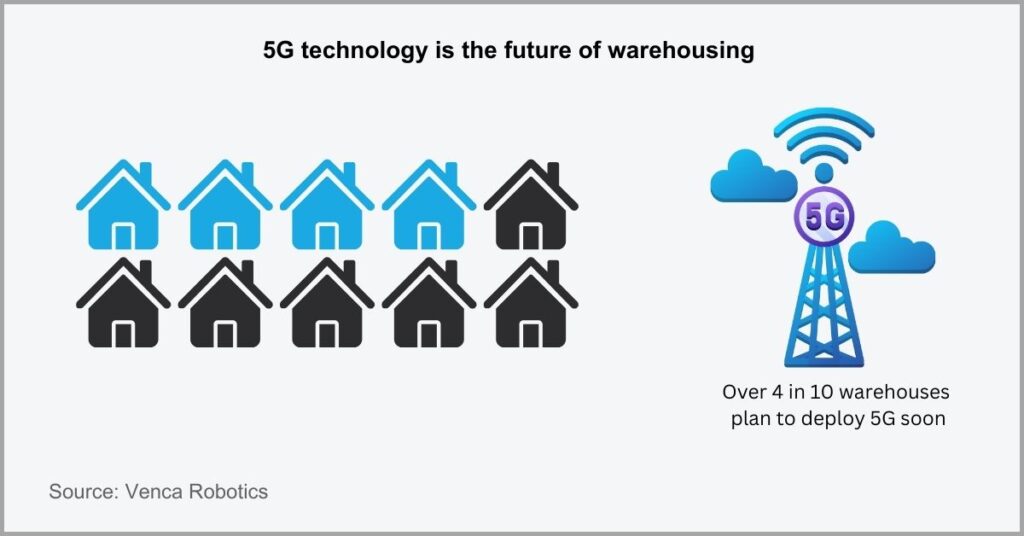
The biggest benefit of 5G is enhanced real-time data processing that delivers holistic benefits for your transloading and intermodal shipping business.
This technology lets you collect data in real time about warehouse processes and assets, within a low-latency, and high-capacity data transfer system. Consequently, this instant availability of information can help you make more informed decisions promptly.
Although still in its infancy and coverage remains limited, 5G represents one of the most critical uses of technology in warehousing that will usher in a new age of smart logistics.
In the future, I reckon it will serve as an excellent cornerstone for technologies like edge computing to help improve the accuracy and speed of warehouse operations. 5G will also improve on VR technologies for warehouses to deliver higher quality experiences.
8: Advanced analytics for performance optimization
What kind of analytics are used in warehousing?
The main types include diagnostic and descriptive analytics, which entail scrutinizing historical & current data and predictive analytics that involves predicting future needs. We also have prescriptive analytics which helps suggest optimal courses of action.
When it comes to warehousing, understanding and unlocking value from data is key to increasing efficiency, boosting productivity and streamlining operations.
In fact, you can improve your operating margin by 60% if you embrace big data analytics in your warehouse, according to a study by McKinsey. This largely stems from better resource allocation, process optimization and waste reduction.
So data driven analytics rank among the critical uses of technology in warehousing, more so if making logistics more profitable is a big concern for your business.
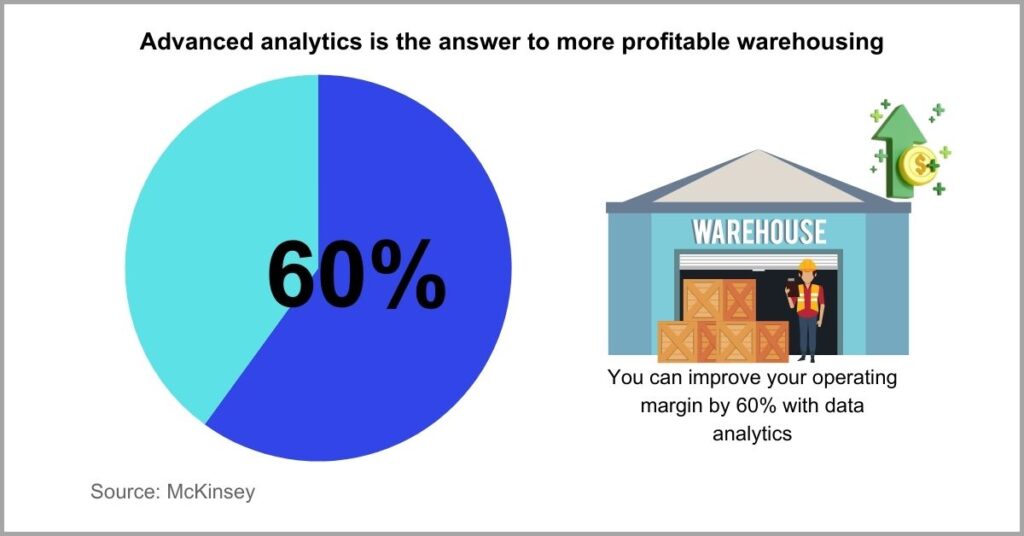
That said, you need to track important KPIs to improve warehouse performances.
Some of these metrics include picks per hour and order accuracy, which are key to customer satisfaction. You should also monitor stock turnover ratio, which can help improve cash flow and also prioritize supplier KPIs to assess a vendor’s reliability.
Generally, you should have a KPI dashboard for each important aspect of your operations and a great warehouse transload management software may help.
It’ll offer distinct dashboards for tracking shipment metrics, worker performances, and inventory management, among others, for more efficient decision-making.
Beyond warehousing, data-driven decision making can also streamline logistics.
It can help you plan routes better to reduce transportation costs and improve supply chain visibility to pinpoint and mitigate risks and prevent disruptions.
9. Maximizing online visibility for WMS SaaS
Logistics SaaS is a very unique market.
Competition is intense yet customer expectations change really fast. It’s important to have a bespoke SEO strategy that can help improve the discoverability of your solution, strengthen brand connections online and boost new user acquisition.
That said, generic SEO marketing strategies will not cut it for logistics software, which require a custom SaaS strategy fine tuned to address industry challenges.
A study by FirstPageSage shows a potential 702% ROI for SaaS SEO, which proves why it needs to be part of SaaS marketing strategies for your business. With content-led SEO, you can unlock exponential site traffic growth and get more leads.
Furthermore, you can enjoy extremely low cost-per-acquisition and boost customer retention for your warehouse management SaaS product.
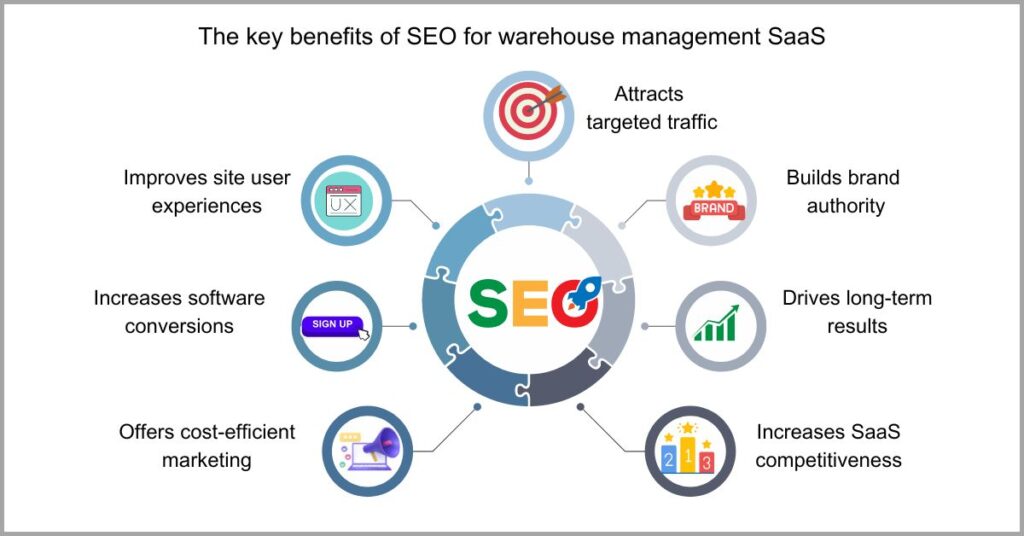
So how can you improve search rankings for your WMS?
You can rarely go wrong with keyword-driven content marketing, which I recommend for its ability to generate leads for your warehouse management software solution very cost-efficiently and sustainably.
A high-quality backlinking strategy that ropes in credible players in your industry who’ve established authority will also help you rank higher and get relevant referral traffic.
However, obtaining quality backlinks is an uphill task in the warehouse SaaS industry, so I suggest working with the best SaaS SEO agencies for effective backlink strategies.
Beyond backlinking, working with a specialized agency will also help you to massively enhance the effectiveness of your overall SEO efforts. They’ll help you build topical authority, increase domain rating and establish trust in the warehousing industry.
10. Cloud-based warehouse management systems
Is an on-premise, traditional WMS a great idea?
One major drawback of traditional on-premise warehouse management solutions is complex deployment. You’ll need to set up physical servers and invest in other IT infrastructure, whereas a cloud WMS essentially delegates these needs to a third-party.
Compared to cloud-based WMSs that centralize data, on-premise solutions alienate other underlying systems and create data silos for your warehouse.
Cloud adoption is rising today with 89% of warehouses having already adopted various cloud-based technologies, going by a study by Flexera. This adoption is propelled by cost-efficiency benefits and the need to access process data in real time.
So cloud-based WMS make up some popular uses of technology in warehousing today, and failing to incorporate them into your workflow can hurt operational intelligence.
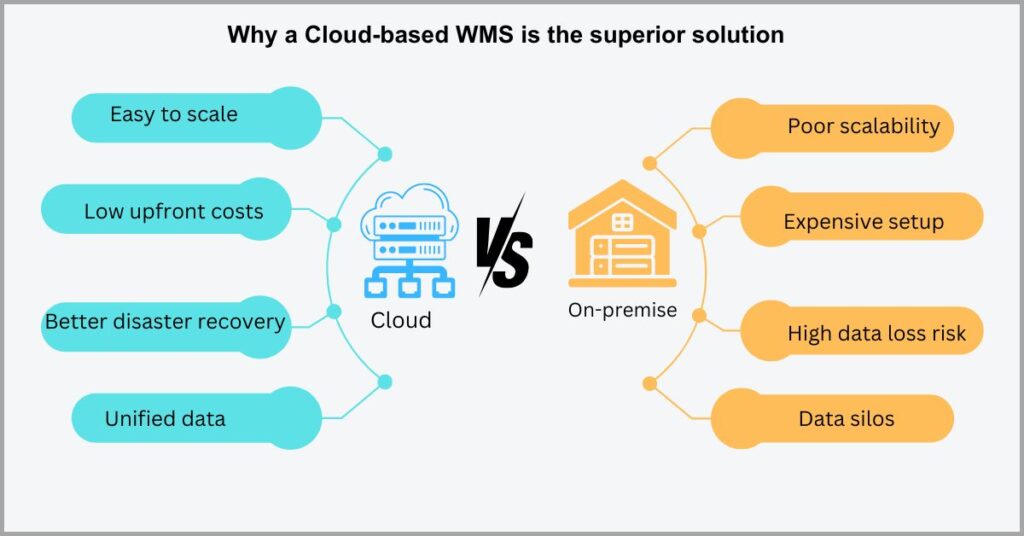
Essentially, cloud-based WMSs offer excellent scalability and flexibility.
As you grow, or even try out other profitable warehouse business ideas to widen your revenue stream, your cloud-based WMS can grow with you and meet these new needs.
It can accommodate more warehouses, take on a swelling inventory without sacrificing performance, and even manage increasing orders with ease. All this without needing to massively expand your IT infrastructure as would be the case with legacy solutions.
On top of that, you also get remote access capabilities, which enable you to decentralize warehouse management and improve collaboration with colleagues.
Cloud-based warehouse management systems also offer out-of-the-box data connectors for ERPs, CRMs and other tools you rely on. This ensures data flows seamlessly across these different platforms to enhance operational intelligence.
Conclusion
We live in the age of smart warehouses & logistics.
From IoT-driven inventory tracking and AGVs to AI-powered demand forecasting and AR-driven order picking, technology is uplifting critical logistics aspects.
Today, it’s important to embrace new innovations early enough, because slow adoption can delay process improvement and obstruct revenue growth.
A Cleo study revealed that 77% of businesses who invest in supply chain technologies increase revenue by approximately $500,000 within a year. So technology is undoubtedly a catalyst for growth.
That said, the future of warehousing and logistics is brimming with potential, with anticipated innovations like 5G and blockchain, among others, promising to increase efficiency to unprecedented levels.
We can expect even more innovative uses of technology in warehousing and logistics in the coming years, setting the stage for end-to-end digitization and automation.
So it’s important to create a long-term strategy for embracing the latest technological breakthroughs to future-proof your business and improve competitiveness.

